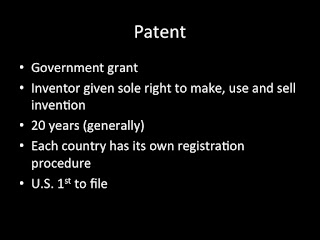Trademark Application Process
Once you file a U.S. trademark application with the Patent and Trademark Office, the application follows a standard examination process. The below list is not meant to cover every contingency, but is a broad outline of the application process.- Application filed.
- In the event the mark is capable of different spellings or pronunciations, the PTO may issue a Notice of Pseudo Mark. For e.g., if the mark is URGR8, a pseudo mark may issue for "YOUR ARE GREAT." A pseudo mark has no legal significance, does not represent any formal examination of the application, and does not appear on any registration.
- In the event the mark contains design features, the PTO may issue a Notice of Design Search Codes. Again, this Notice does not represent a formal examination of the application, but it does appear in searches and on certificates of registration.
- Once an examiner is assigned to the application (3-4 months after filing), the applicant may discuss the above notices with the examiner if the applicant believes the Notices are incorrect. There is no formal dispute procedure for these Notices.
- The assigned examiner reviews the trademark application 3-5 months after the filing date & issues an Office Action or Examiner Amendment if issues need to be resolved.
- If an applicant has filed a trademark application without legal counsel and receives a 2(d) refusal stating that the application is rejected as being confusingly similar to a pre-existing registration or application, it is time to obtain legal counsel to assist applicant in (1) determining if a response is appropriate and (2) drafting that response .
- The applicant has 6 months to respond to an Office Action. Failure to respond will result in abandonment of the application .
- Examiner Amendments can often be handled by a telephone conversation with the examiner.
- Notice of Publication issues once (if) all issues raised by the examiner are resolved.
- If the PTO rejects a Response to Office Action and a Final Refusal is received, an applicant may request reconsideration or appeal to the Trademark Trial and Appeal Board (TTAB).
- The trademark application is published in U.S. PTO¹s Official Gazette for 30 days to allow individuals or entities a chance to object to registration of the mark.
- The application receives another short review if no objections are received during the publication period.
- If the application is not yet in use in interstate commerce, the application will receive Notice of Allowance in due course (1-3 months after publication).
- Applicant has 36 months from the issuance of the Notice of Allowance to file a Statement of Use detailing use of the mark in connection with the services detailed in the application (an Extension of Time must be filed every 6 months if no use has occurred).
- After publication, a Certificate of Registration will issue (1-3 months after publication) if the application is in use and appropriate dates of first use and specimens are on file with the USPTO.
- Between the 5th and 6th year after registration, a registrant must file an Affidavit of Continuing Use along with a specimen showing use of the trademark in connection with each class of products/services in which the mark is registered. During this time, the registrant may also file an Affidavit of Incontestability. There is a 6 month grace period to file the Affidavit of Continuing Use, but not the Affidavit of Incontestability.
- The Affidavit of Incontestability only needs to be filed once and it can only be filed at 5 year intervals of registration.
- Between the 9th and 10th year after registration, and every 10 years thereafter, the registrant must file a Request to Renew and an Affidavit of Use (again, along with a specimen showing use of the trademark in connection with each class of products/services in which the mark is registered). A 6-month grace period exists to file the Renewal Request and Affidavit of Continuing Use.
- At this time, an Affidavit of Incontestability may also be filed if it was not filed previously.
This blog is for informational purposes only and is not to be considered legal advice. If you have a particular legal problem, please consult with a qualified practitioner to discuss your rights.
(c) 2016, Judith Keene ALL RIGHTS RESERVED













































